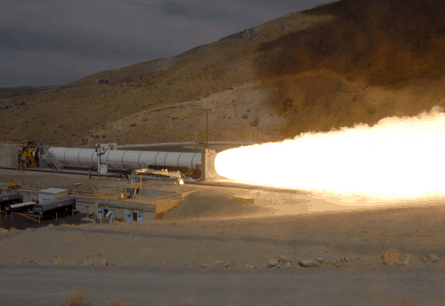Rocket builder Alliant Techsystems (ATK) says work is proceeding on several tests aimed at proving out its first stage for the NASA Ares I crew launch vehicle despite the very real possibility the programme may be cancelled.
Of the seven alternatives to existing human space flight plans developed over the summer by a 10-member review panel assembled by the Obama administration and chaired by former Lockheed Martin chief executive Norm Augustine, only one includes keeping the Ares I.
The committee released its executive summary in August and plans to issue its 100-page final report by the end of September, after which the White House could take action.
"The current programme as it is being pursued is not executable," said Augustine to members of the House Science and Technology subcommittee on 15 September during a hearing on the committee's findings. "It's a path that will not lead to a useful, safe exploration programme due to the mismatch between funds and path." Augustine said NASA would need at least $3 billion more per year in its $18 billion annual budget to adequately fund the Constellation programme. The agency so far has spent $7.7 billion on the various components of Constellation.
 |
|---|
© ATKATK on 10 September completed a full-scale ground test of the five-segment Ares 1 solid rocket motor first stage |
The majority of options developed by the Augustine committee call for turning over human transportation to the International Space Station to commercial providers, which would remove the need for Ares I, a programme on which NASA has already spent $3 billion and four years developing.
Former NASA administrator Michael Griffin, during the same hearing, noted that the commission, which had only 90 days to do its work, did not provide any credit to the existing programme for experience.
"There was no distinction made in independent cost estimates between real programmes and viewgraph programmes," said Griffin, a Bush administration appointee who resigned his position in January at the change of administration. "NASA has four years and $8 billion of experience, but the commission gave a 1.5X cost-growth factor for all programmes, whether new or partially mature, like Constellation."
In the middle of the fray, ATK on 10 September completed a full-scale ground test of the five-segment Ares I solid rocket motor first stage after a 14-day delay due to problems with ground test equipment.
"We nailed the 3.6 million pounds of maximum thrust specification," says Kent Rominger, vice-president of test and research operations for ATK's space systems group and veteran of five space shuttle flights, two as mission commander. Rominger says a thrust oscillation that has caused concern during the design phase of the programme "was lower than most of the four-segment ATK motors used for Shuttle flights" during the test, most likely due to the slower burn characteristics of the a new propellant being used for the Ares I thrust profile.
While additional data to be measured later during Ares I modal tests is needed to quantify the potential thrust oscillation of the actual rocket, Rominger says the first test firing shows "clearly we are headed down a path that, with the mitigation we're planning, [thrust oscillation] won't be a problem". Those mitigations include active and passive dampers on the vehicle and possibly isolators on crew seats in the Orion capsule.
ATK is beginning to build segments for the first of two additional instrumented first-stage ground test units, one to be fired at a propellant temperature of 4°C (40°F) (cold test) next summer and the second to be tested at 32°C (hot test).
Additionally, the company plans to perform a drop test for its main parachute system on 7 October using a Boeing C-17 dropping a 27,216kg (60,000lb) payload on a single parachute, the world's largest, according to ATK. The Ares I will use three of the parachutes to recover the first stage. The full parachute recovery system will be tested on Ares I-X, a full-scale prototype vehicle with dummy second stage and crew module that is scheduled for launch from Florida on 31 October.
Source: Flight International



















